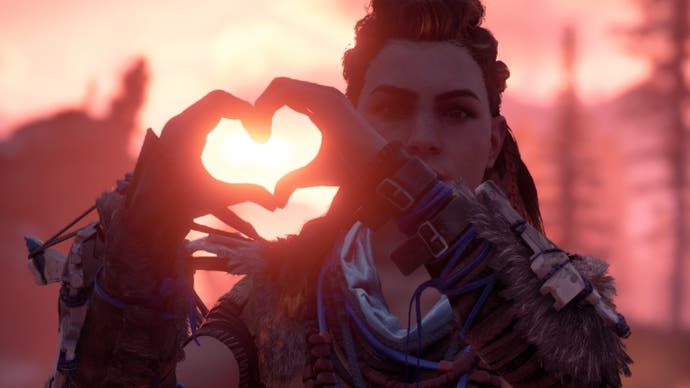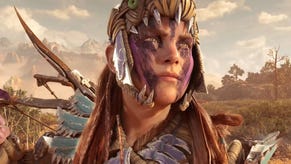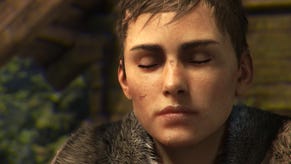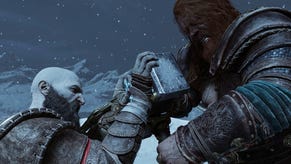Horizon Zero Dawn PC revisited: is it fully fixed?
There's a dramatic improvement - but some issues remain.
With the announcement of more PlayStation exclusives coming to PC, starting with Days Gone this Spring, the time felt right to return to Horizon Zero Dawn, Sony's first full-blooded attempt at porting one of its most celebrated triple-A masterpieces. On release, performance and the overall quality of the user experience was poor, but six months on there's no doubt about it: the game has dramatically improved. It's not perfect, it's still far from ideal, but Guerrilla Games has taken onboard feedback and corrected many of the issues, while dramatically improving performance in some scenarios.
Even just loading up the game, there are some immediately apparent differences. When the game first released, booting the title at 4K resolution saw Horizon actually internally render at the correct resolution, before downscaling to 1080p, then upscaling back up to 2160p - this is now fixed. The initial shader compilation that took so long back in the day is now carried out in the background, allowing you to visit the settings screen while it's in progress or even start the game (I would recommend letting the shader caching process complete, however). The menus themselves remain much the same, but the various v-sync options now work properly too, without the massive performance drop the borderless windowed mode had when the game launched. Anisotropic filtering? That was broken on release too, requiring a GPU control panel tweak to improve detail, but this now works as it should.
This is basic stuff but it's good to see it fully fixed. The same goes for dynamic resolution scaling: at launch, running at 4K ultra on an RTX 2080 Ti could see a targeted scene operate at 54fps, so DRS should only need to slightly tweak resolution downwards to get us to 60fps - but instead, resolution dropped to 1080p instead (!). You guessed it, it's fixed now, and I would now recommend DRS to be enabled if you're running at a fixed frame-rate like 60fps. AMD's FidelityFX contrast-adaptive sharpening (CAS) is also added to the menu system: it is just a sharpening filter, but I think it is a nice enhancement for those who want to increase contrast when at lower resolutions and using TAA anti-aliasing.
Before we move on to more profound issues we had with the release code, there is one lingering problem I'd like to see addressed. Screen-space ambient occlusion (SSAO) seemed to be bugged at launch in that the radius of the shading effect diminished at higher resolutions when using the higher quality settings. That's the still the same with the latest patch 1.10, so while it might sound odd, I'd still recommend the medium setting here. I'd also recommend the medium setting for texture quality. Just like the launch version, engaging a higher setting only seems to tweak LOD bias - this can produce more detail in the distance, but there's the danger that with too much texture detail occupying too few pixels, you will get an unwelcome shimmering aliasing effect.
In-game, almost all of the issues we had have either been resolved, or at the very least, mitigations have been made. At launch, the grass animation added to the PC version only ran at 30fps when the rest of the game was unlocked - this has now been corrected. Other related 30fps problems - such as Aloy's hair animation - are also fixed. Another frame-rate related issue was general awkwardness in cutscenes at 60fps, as the game was seemingly designed around a fixed 30fps update. Characters could be seem to be warping into different positions on camera cuts: this no longer happens. However, there's a new effect now - one we see on quite a few games actually - a freezing effect on characters on transitions when the rest of the world continues to update. It's not a big issue, but it is there, and it is noticeable. It is, however, an improvement over the prior warping effect.
In terms of in-game issues, the worst problem - stutter on camera cuts, during traversal or even when UI elements presented - has been improved but still isn't quite right. The stuttering is now reduced, but there does still seem to be a hitching issue where the UI pops up with a new message: it's not a frame-time stutter any more, but more of a jump in motion. I noticed this a couple times throughout my play and it is noticeable, but it is less distracting than the momentary freezing seen in the release code. All told, the experience is definitely improved across the board, but there are still oddities - like a thin black outline that frames the entire presentation sometimes.
Beyond polish and stability, performance was a genuine problem back in the day. Nvidia GPUs based on the 10-Series Pascal architecture suffered particularly, to the point where the GTX 1060 delivered performance that was worse in spots than the far less capable PlayStation 4 GPU. Its closest AMD equivalent - the Radeon RX 580 - fared better, but over 6TF of compute power was not capable of consistently doubling the performance of the 1.84TF PS4 graphics core. There's good news and bad news here. Whether it's down to Guerrilla Games' optimisation, Nvidia driver improvements or a mixture of both, the GTX 1060 is now much, much more effective. The improvement is big: the benchmark registers a 65 per cent boost to performance, while in-the-moment stutter is reduced by a great degree.
The RX 580 sees fewer exciting differences. In the benchmark, overall performance is the same, but the first cutscene in the game shows much more in the way of interesting improvements with the overall frame-rate being higher, while general optimisations we've already talked about see a much reduced level of stutter. That said, it's worth pointing out that moving further into the game saw performance level out to how the game looked at launch running on this GPU, while GTX 1060 continued to show a big improvement. Indeed, if we put the two 'old timer' GPUs back-to-back, they are now very even in performance in a world where games usually favour one over the other. This is rather interesting as I would have expected AMD's GCN architecture to show an advantage in a console-centric title.
So, what have we learned from this re-evaluation of the game and are there any takeaways in how future Sony ports may work out? Obviously, we don't really want to see this situation play out on future Sony titles. Well, Horizon Zero Dawn is much improved and it's no longer a 'poor' PC conversion, but neither is it particularly outstanding: there are still some issues such as the wonky cutscene camera change animation stalling, the rather odd animation playback jolt and the fact that I still think the game is generally under-performing on PC compared to the consoles. Even at matched console settings with low quality anisotropic filtering and middling image quality at 1080p, we should expect GPUs like RX 580 and GTX 1060 to power way beyond the results of PlayStation 4. Taking the RX 580 as an example, to see an AMD GPU with over 3x the compute performance of PlayStation 4 deliver less than 60fps is disappointing - and doesn't tally with the performance upgrade seen on other well-rounded console ports.
But then again, Horizon Zero Dawn was never intended for a multi-platform launch and operates on an engine which was not designed around being on anything but PS4 - and neither was it meant to run at anything other than 30fps. And that's where Sony's other first party titles may see a more graceful transition to PC. For example, take Days Gone - the next Sony conversion due sometime in the Spring. It uses Unreal Engine 4 as a foundation which should help cross-platform conversions, while we've already seen with the PlayStation 5 patch that just removing the 30fps cap allows the game to run just fine at 60fps - and possibly beyond. We've seen similarly improved performance with Ghost of Tsushima, God of War and even the OG disc version of The Last Guardian. Getting PC ports right isn't easy, but there is the evidence to suggest that arbitrary frame-rates at least may be less problematic on some Sony first-party titles. As for just how far Sony pushes these ports - and how much of an improvement we'll see over the original PlayStation games - well, that remains to be seen, but we'll be looking at each and every one of them as and when they arrive.




















